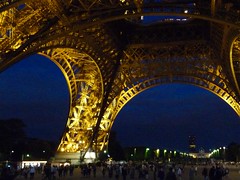Home: Classical Mechanics, 2011
Purpose of the course

This is an advanced course on classical mechanics. The purpose of this course is to introduce the formal structure of mechanics such as variational methods, phase space flows and the techniques needed for further developments beyond classical few-body physics.
Many students are expected to know most of this material. They can skip the drudgery of sitting through a course by opting to take a drop test on August 27. Register for the drop test by sending me an email before August 20.
Prerequisites
Pre-requisites for this course are two-fold. First, I will assume good working ability to solve for the motion or equilbrium of few body systems. Second, I will assume the ability to solve second order differential equations with constant coefficients. Both these abilities will be assumed at the undergraduate (B.Sc.) level. I will also assume a basic ability to use computers.
Ancillary skills
You will have to learn to use Mathematica. Here is a quick tutorial introduction to Mathematica: download it and try it out. In order to do this you will need an account on the servers in the computer center.
Evaluation
Performance evaluation will be based on assignments and tests. Tests will be given in the middle and end of the semesters (on 17 September and 29 November), and regularly throughout the course.
Course outline

Space, time and relativity. Constraints and coordinates. Configuration space, phase space, Lagrangians, Hamiltonians and the principle of least action. Symplectic structures, canonical transformations and Poisson brackets. Pendulums, small oscillations. Phase space motion, singular points, stability. The Kepler problem, rockets and satellites. The rigid rotor. The Hamilton-Jacobi method. Integrability and action-angle variables. Variation of constants and perturbation theory. Parametric resonance and gaps in the asteroid belt. Chaos and the KAM theorem. Continuum dynamics: elasticity and fluid dynamics.
Copyright: Sourendu Gupta; Last modified on 19 Apr, 2024.
